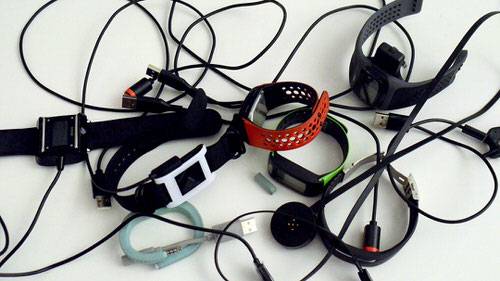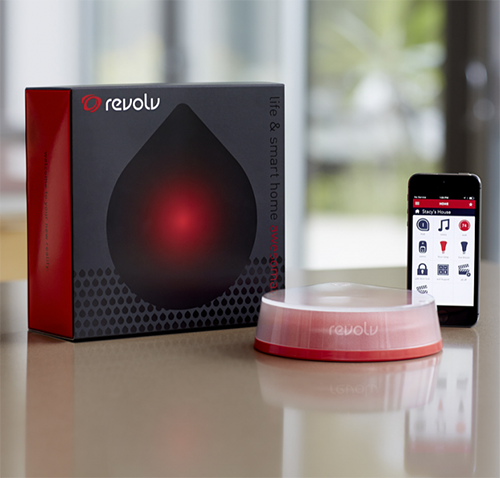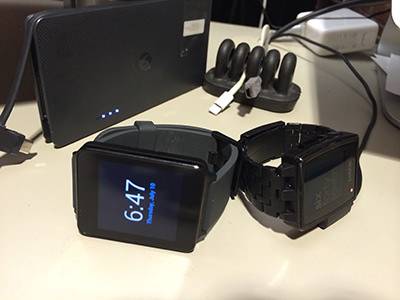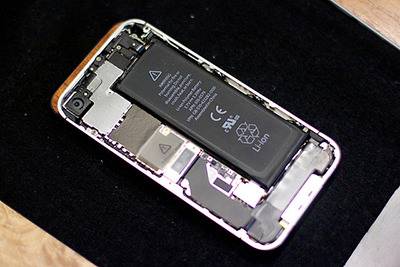I live in the future. My body, pockets and home are festooned with smart gadgets that can command nearly everything in my life with a phrase, gesture or tap. It’s a cool and exciting experience—or at least it would be, if it didn’t constantly shackle me to power cables.

See also: All I Want For Christmas Is An End To All These Cables
The drudgery sucks the joy out of what should be a fun glimpse of how we all might be living one day. Because if I forget to charge my phone or wearables, or pack my stash of back-up batteries and cables, I’m suddenly stranded in ye olde unconnected days of yore.
It’s a stymying scenario. The pace of innovation is moving fast, while battery technology lags behind. Companies are doing everything they can to make up for this gap, but those workarounds can only go so far. Meanwhile, a growing army of devices, apps and accessories increasingly hinge on mobility. That means today’s annoyance could become a systemic problem tomorrow.
If the future is battery-powered, we have an awful lot of work to do.
Time Tripping
When I leave the house, my phone tells my smart home, which kills the lights. My smartwatch shakes, letting me know I’ve got a text. It’s not important, so I keep walking. There’s a spring in my step, thanks to the good night’s sleep confirmed by my fitness band. But I’m in no hurry. According to my phone, my bus is 7 minutes late. So with time on my hands, I answer a call from a pal by tapping my Bluetooth wireless earbuds.
I am connected—deeply and fabulously so. And my smartphone’s at the center of the action.

Later, my battery’s dead and I’m plunged into 1989. I check a street map poster, ask strangers for directions and make a call over a rare public pay phone. I spot a coffee joint. It takes PayPal, but with no app, I’m stuck scraping coins from the bottom of my bag to pay for my slow drip. Eventually I arrive at my doorstep, but my smart home has no idea. So I enter and fumble toward the lamp, banging my shins in the process.
This happens to me more often than I want to admit. The consolation is that I’m usually close to home, at least. Some international travelers won’t be so lucky, thanks to a new rule from the Transportation Security Administration.
Overseas airline passengers entering the U.S. will need to ensure their gadgets can power up before hitting the security checkpoints. If you’re selected for inspection, and you can’t turn on your phone, tablet, ereaders and other devices at security checkpoint, you could be turned away.
Imagine if this happened to you. Would you ditch the phone to make the flight? Risk missing the flight, to find an outlet and charge the device? And what if your charge cable’s stuffed in your checked baggage? These are tough choices, and given the current state of battery technology, it’s likely one plenty of folks will have to make at some point.
Without Batteries, There Is No Mobility

Most days, I carry a wall adapter, power cables and an external battery (two, when I travel).
The spare batts are a necessity, but they add to the frenzied charging routine dictated by my wireless earbuds, watch, fitness band, ereader, tablet, hotspot and laptop, among other things. My iPhone, which is the lynchpin for several of these products, is the most important of the lot.
The battery capacity of Apple smartphones, starting from the 2007 original to the latest model, has grown only 12 percent. The very first iPhone came with a 1400 mAh battery; the current iPhone 5S offers about 1570 mAh. That may be puny against the Samsung Galaxy S5’s whopping 2800 mAh, but the bigger Android device also has a bigger, battery-sucking 5.1-inch screen to go along with that larger power cell, essentially leveling it out. Apple also optimized its iOS software with energy consumption in mind. That’s why the iPhone’s estimated battery usage has remained pretty consistent throughout this stretch. It’s impressive, considering the arrival of Retina Displays and increasingly powerful processors.
It’s less impressive in the real world. Even though Apple optimized the software to conserve energy—iOS suspends certain background processes after a period of inactivity, for instance—my iPhone still routinely poops out before the day is done. Granted, I’m a heavy user with a lot of other gadgets and services tied to it. But if this connected utopia the tech industry imagines actually comes to pass, that will become a pretty common scenario for everyone.
Rumors indicate that two larger iPhone 6 models could be on the way—a 4.7-inch handset and a 5.5-inch version with 1800 mAh and 2500 mAh batteries, respectively. But even if that’s true, it may not improve things, considering larger phones tend to come with roomier, power-guzzling screens.
As for the competition, Android’s penchant for big displays could get some relief with the latest version of the mobile software. Heading to Nexus 5 smartphones and Nexus 7 tablets, Android L comes packing Project Volta, a set of energy-saving features that could boost battery life by as much as 36 percent.
This is the state of mobile technology today: In the absence of more powerful batteries, companies have to use workarounds that can eek out as much usage time as possible.
Power’s A Bigger Pickle For Wearables Too

Battery life could be an even bigger problem for wearable devices. Their makers don’t have the option of cramming giant batts into those wee gadgets.
That leads companies like Pebble to make compromises. By using an energy-efficient e-paper display, the startup managed to make its smartwatch last four to seven days on a single charge. Others, like LG, seem to be in denial. For its LG G Android Wear smartwatch, it chose a full-color, 1.5-inch touch display that works well and looks very nice. Too bad it only works for about day and a half before it needs more juice.
Some wearables, like Shine, Ringly and Jawbone UP24, eschew displays completely, relying on mobile apps and phone screens to display data.
Well, at least these wireless devices don’t exacerbate the unholy zapping of cellphone power the way older accessories did. You can credit Bluetooth Low Energy (BLE) for that. Older Bluetooth profiles, with their sustained connectivity, hammered smartphone batteries. But with BLE, paired devices communicate in shorter bursts, which is much more energy efficient.
BLE may save power, but it doesn’t actually add to the battery life of smartphones or the expanding universe of gadgets that rely on them. There’s only thing that can: the arrival of next-generation power cells.
Where Are All The Battery Breakthroughs?

Engineers and scientists have been working hard on next-generation batteries. Some have even made some intriguing breakthroughs. The problem is, few have actually reached consumers.
Graphene batteries can pack vast amounts of energy in smaller, lighter spaces, while maintaining stability. Silicon beads have been shown to boost the capacity of those lithium-ion (li-ion) batteries stuffed in our phones. Microbatteries successfully reimagined how anodes and cathodes would work, resulting in tiny, but powerful mobile energy cells.
Now researchers are excited about air electrode technology that can double cell phone battery life for a cheaper cost. Work continues on carbon nanomaterials and other nanotube technology, which physically restructure batteries on a microscopic level for better performance and longevity.
While some projects want to transform batteries, others just want to improve current li-ions. Silicon sponges have been shown to boost performance, as has super-thin ultracapacitor sheets, which can also work as standalone power sources.
Sounds great. So where can we find devices that use these types of batteries? Oh wait, that’s right—we can’t. None of these discoveries are commercially available yet.
If there’s one ray of hope, it may rest in Amprius, a Silicon Valley startup that created a new type of li-ion battery. The silicon and carbon power cells can house roughly 20% more power than existing batteries. And unlike other contenders, it has already started shipping (to gadget makers in China). Now that it has scored $30 million in funding, the company wants to develop batteries that can store 50% more power than today’s li-ions.
Hopefully it will happen sooner rather than later. For all this work, nothing has really jumpstarted mobile batteries’ momentum in a meaningful way yet. And something really needs to—before mobile tech’s future stalls out.
Feature image courtesy of Flickr user Andy Armstrong. iPhone battery teardown image courtesy of Flickr user Alan Levine. Revolv smart home hub image courtesy of Revolv. All others by ReadWrite.









